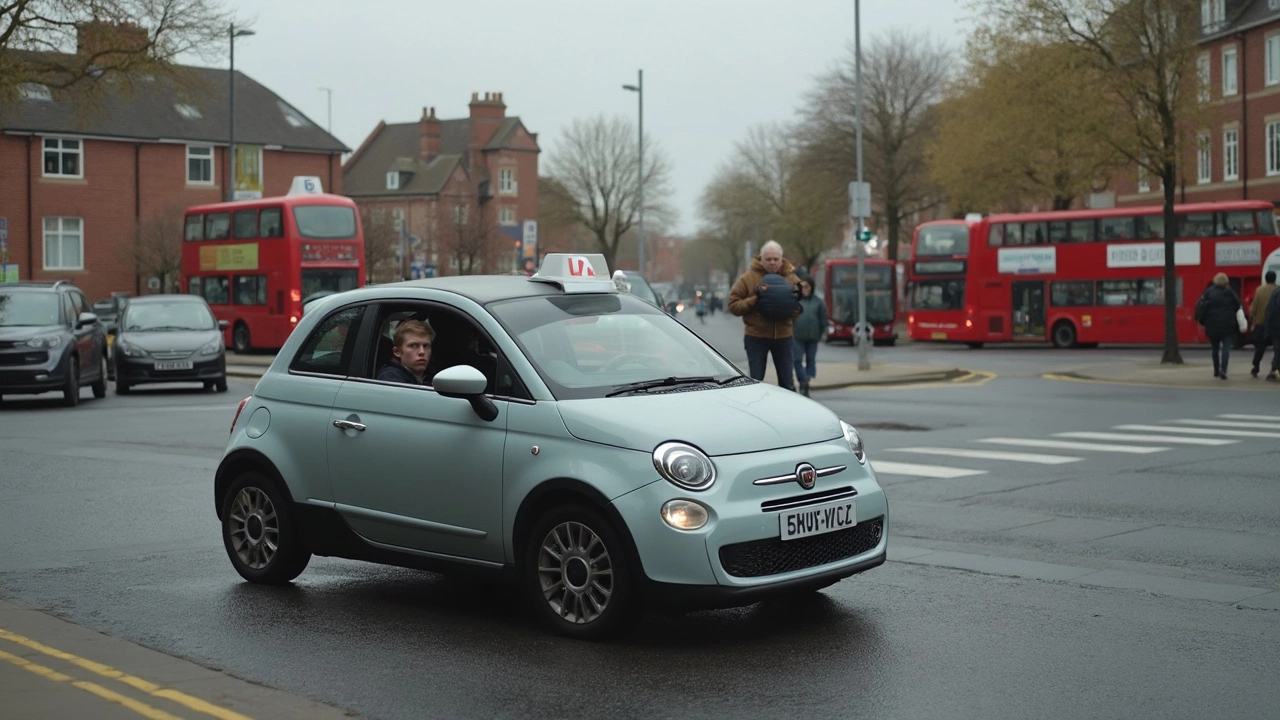Effective Driving Practice for Real Test Success
If you think you can ace the test just by reading a book, think again. Real improvement comes from doing the right kind of practice, not just clocking hours behind the wheel. Below are simple, proven ways to make every minute count and build confidence before you face the examiner.
Why Consistent, Focused Practice Works
Every time you drive, your brain builds new pathways for parking, lane changes, and hazard spotting. Short, focused sessions are better than long, distracted trips because they keep your attention sharp. Aim for 30‑minute blocks where you concentrate on one skill – like smooth braking or scanning mirrors – before moving on.
Mixing up environments also helps. Driving on quiet residential streets one day and busy main roads the next forces you to adapt, which mirrors what you’ll face on the test day. The more varied the practice, the less likely you’ll be caught off‑guard.
Easy Ways to Practice Without a Car
You don’t always need a vehicle to sharpen your skills. Start with mental rehearsal: picture the test route, imagine every turn, and run through the actions you’d take. Studies show mental practice improves reaction time just like actual driving.
Use a driving simulator or a video game with realistic physics. It forces you to think about speed, positioning, and road signs. Even watching YouTube walkthroughs of the test routes can help you spot tricky spots before you get there.
Another low‑tech trick is to walk the test route. While you walk, notice the layout of junctions, the placement of stop signs, and any blind spots. Walking lets you see the road from a new angle and remember key landmarks.
Don’t forget the basics that affect your performance: proper nutrition and rest. A light snack with protein and complex carbs an hour before a practice session keeps blood sugar stable, reduces nerves, and improves focus. Stay hydrated – dehydration can make you feel sluggish and jittery.
Finally, get feedback early. Ask a friend or instructor to watch you and point out one thing to improve each session. Fixing small errors now prevents them from becoming big faults on test day.
By combining short, focused drives, mental rehearsals, and off‑road tricks, you’ll build a solid skill set without burning out. Remember, quality beats quantity every time. Keep each practice purposeful, track your progress, and you’ll walk into the test centre feeling prepared and confident.
- May 18 2025
- 0 Comments
- Rowan Cavendish
How Long Does It Really Take to Learn to Drive?
Wondering how long it takes to learn to drive for real? This article breaks down what actually affects how fast you pick up driving, from lesson time to real-world practice and nerves on test day. You'll get straight talk about what to expect, why some people need more time, what helps you pass faster, and a few surprising facts about learning to drive. Get practical tips to make the most of your lessons and get your license sooner. Forget myths—get the real timeline.
- April 2 2025
- 0 Comments
- Rowan Cavendish
How Many Hours of Driving Practice Do I Need in California?
Getting your driver's license in California requires understanding the specific driving practice hours needed to meet state requirements. This article delves into how many hours are mandated, the best ways to manage and schedule these hours, and provides some tips for effective practice sessions. Navigating these requirements can be tricky, but knowing the specifics will help you hit the road with confidence.
- December 14 2024
- 0 Comments
- Rowan Cavendish
The True Value of 2-Hour Driving Lessons
Considering the value of 2-hour driving lessons is essential for new drivers. These lessons provide extended practice time, allowing learners to absorb knowledge without feeling rushed. They also offer opportunities for better skill reinforcement and cover a variety of driving scenarios in a single session. Examining the advantages and potential drawbacks can help individuals make informed decisions about investing in longer lessons. Understanding the dynamics of longer sessions helps learners progress effectively towards becoming confident drivers.
- Driving Lessons (41)
- HGV Training (31)
- Driving Test Tips (31)
- Driving Test Booking (26)
- Driving Licence Renewal (23)
- Driving Theory Test (21)
- Pass Plus Course (15)
- Driving Tips (15)
- Intensive Driving Course (15)
- Driver Licensing (14)
Categories
- December 2025 (12)
- November 2025 (13)
- October 2025 (21)
- September 2025 (5)
- August 2025 (8)
- July 2025 (30)
- June 2025 (30)
- May 2025 (30)
- April 2025 (31)
- March 2025 (30)
- February 2025 (28)
- January 2025 (34)
Archives
- driving lessons
- driving test
- driving tips
- intensive driving course
- driving test tips
- HGV training
- learn to drive
- driving theory test
- driver training
- driving test booking
- pass driving test
- HGV driving
- road safety
- driving license renewal
- Virginia driving test
- learner drivers
- safe driving
- Virginia driver's license
- driving license
- learning to drive



